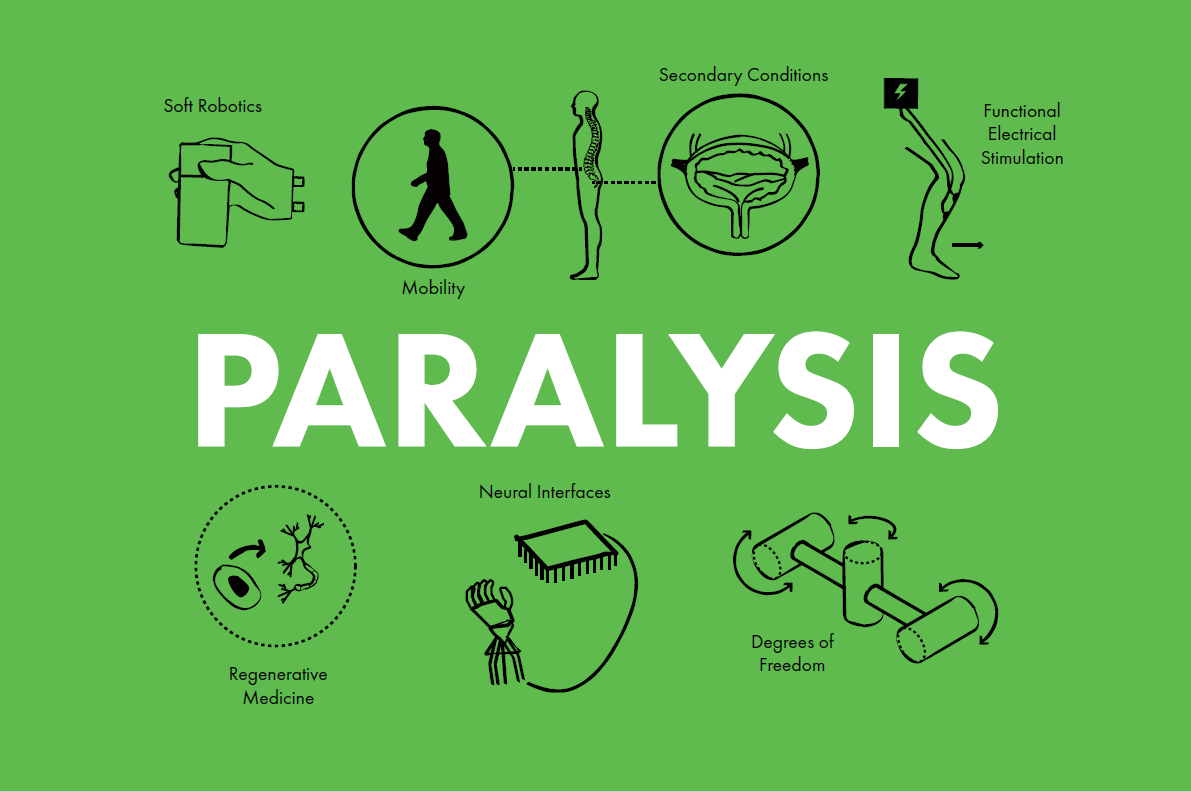Paralysis was not selected by the public vote to be the focus of Longitude Prize.
There are other exciting and innovative projects and prizes that are taking place in this area. Below are links to some of these.

The paralysis problem
In the UK eight people become paralysed each day.
Paralysis can emerge from a number of different injuries, conditions and disorders and the effects can be devastating. Every day can be a challenge when mobility, bowel control, sexual function and respiration are lost or impaired.
Paralysis can be the result of damage to pathways in the brain which affect motor function, such as in the case of stroke or Parkinson’s disease. Paralysis can also occur when communication is impaired between the brain and the spinal cord, or the spinal cord and the limb, as in the context of spinal cord injury.
Challenge
Paralysis can be life changing. But with advances in neural interfaces, assistive technology and regenerative medicine there is the potential to overcome it. Bringing these disciplines together is the key to innovation within and across these fields.
Rehabilitation can be laborious and there is no effective treatment to restore the function of the limbs after serious injury. Brain controlled interfaces, nerve stimulation technologies, assistive technologies, wearable devices and regenerative medicine have the potential to restore the ability to conduct everyday activities and significantly improve quality of life. Many of these technologies however, still need development and are currently too intrusive for everyday life.
